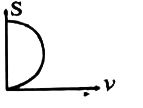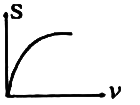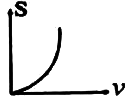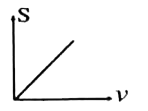An object is moving with a uniform acceleration which is parallel to its instantaneous direction of motion. The displacement velocity (v) graph of this object is




The correct Answer is:C
Step by step video solution for An object is moving with a uniform acceleration which is parallel to its instantaneous direction of motion. The displacement velocity (v) graph of this object is by Physics experts to help you in doubts & scoring excellent marks in Class 11 exams.
Updated on:21/07/2023Similar Questions
An object is moving with a uniform acceleration which is parallel to its instantaneous direction of motion. The dispalcement (s)-velocity (v) graph of this object is.
View SolutionAn object is moving with a uniform acceleration which is parallel to its instantaneous direction of motion. The dispalcement (s)-velocity (v) graph of this object is.
View Solution
Knowledge Check
Starting from rest a body moves with uniform acceleration and acquires a velocity v after n seconds. Then its displacement in the last two seconds is
A2v(n+1)/nB2v(n−1)/nC2v(n+1)2/nDv(n−1)2n
The displacement (s)- velocity ( v ) graph of a particle if it starts moving from rest with a uniform acceleration which is parallel to its instantaneous direction of motion is
View SolutionThe slope of velocity-time graph for uniform motion of an object is
View SolutionAssertion: A uniform circular motion is an acceleration motion.
Reason: Direction of acceleration is parallel to velocity vector.
View SolutionCan an object accelerate If its velocity is constant?
View SolutionState which of the following situations are possible and give an example for each of these :
(a) An body with a constant acceleration but with zero velocity.
(b) An object moving with an acceleration but with uniform speed
(c) An object moving in a certain direction with an acceleration in the perpendicular direction.
View SolutionA : The relative acceleration of two objects moving under the effect of gravity, only is always zero, irrespective of direction of motion.
R : The acceleration of object moving under the effect of gravity have acceleration always in downward direction and is independent from size and mass of object.
View SolutionSay Yes or No:
a. Can an object moving towards north have acceleration towards south?
b. Can an object reverse the direction of its motion even thouth it has reverse the direcleration?
C. Can an object reverse the derction of its acceleration even though it continues to move in the same dirction?
d. Average speed is the magnitude of average velocity
e. At any instant of time. the directions of change in velocity and acceleration are differnt.
View Solution